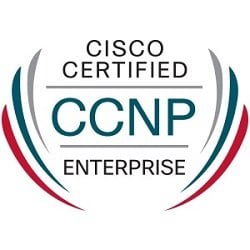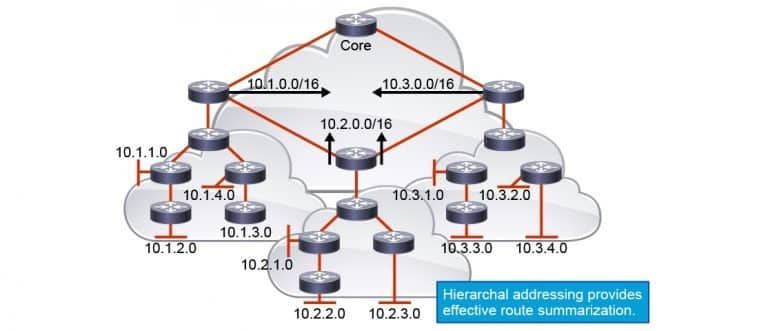Obiettivi | Certificazione | Contenuti | Tipologia | Prerequisiti | Durata e Frequenza | Docenti | Modalità di Iscrizione | Calendario

Il Corso ENSLD Designing Cisco Enterprise Networks è parte del percorso Cisco CCNP Enterprise. L’obiettivo principale di questo corso è fornire le competenze per la progettazione del Design delle reti di tipo enterprise. Affrontare tematiche critiche e strategiche quali: Multiprotocol BGP, SD-Access, Resilient WAN, QoS etc. Questo corso copre le tecnologie avanzate, espandendo gli argomenti trattati nel corso Implementing and Operating Cisco Enterprise Network Core Technologies (ENCOR). Durante il corso, i partecipanti saranno introdotti a una serie di argomenti chiave, tra cui l’analisi dei requisiti di rete, la progettazione di soluzioni scalabili e affidabili, e l’implementazione di tecnologie Cisco per soddisfare le esigenze delle organizzazioni moderne. Il corso copre anche le best practice per la progettazione di reti wireless, le strategie di sicurezza e l’integrazione di servizi di rete avanzati. Il Corso contribuisce alla preparazione dell’esame di Certificazione CCNP Enterprise (Esame 300-420).
Contattaci ora per ricevere tutti i dettagli e per richiedere, senza alcun impegno, di parlare direttamente con uno dei nostri Docenti (Clicca qui)
oppure chiamaci subito al nostro Numero Verde (800-177596)
Obiettivi del corso
Di seguito una sintesi degli obiettivi principali del Corso ENSLD Designing Cisco Enterprise Networks:
- Fornire competenze per la progettazione delle reti aziendali.
- Analizzare i requisiti di rete e progettare soluzioni scalabili e affidabili.
- Implementare tecnologie Cisco avanzate per soddisfare le esigenze organizzative.
- Esplorare le migliori pratiche per la progettazione di reti wireless e strategie di sicurezza.
- Integrare servizi di rete avanzati e tecnologie come SD-Access e Resilient WAN.
Certificazione del corso
Esame 300-420 ENSLD Designing Cisco Enterprise Networks;
Esame Parte della Certificazione CCNP Enterprise; Il programma di certificazione CCNP Enterprise prepara per i ruoli professionali nelle più moderne tecnologie nell’ambito dell’enterprise networking. La CCNP Enterprise ora include elementi di automazione e programmabilità per la massima scalabilità delle moderne infrastrutture di rete. Successore della Certificazione CCNP Routing and Switching, una delle certificazioni più autorevoli del settore. In particolare l’esame 300-420 ENSLD testa competenze su argomenti quali: enterprise design, advanced addressing e routing solutions, advanced enterprise campus networks, WAN, security services, network services e SDA.
Contenuti del corso
- Designing EIGRP routing
- Designing OSPF routing
- Designing IS-IS routing
- Designing BGP routing and redundancy
- Exploring BGP Address Families and Attributes
- Designing an Enterprise Campus LAN
- Designing Layer 2 Campus
- Designing a Layer 3 Campus
- Discovering the Cisco SD-Access Architecture
- Exploring Cisco SD-Access Fabric Design
- Exploring Cisco SD-Access Site Design Strategy and Considerations
- Discovering Service Provider-Managed VPNs
- Designing Enterprise-Managed VPNs
- Designing WAN Resiliency
- Examining Cisco SD-WAN Architectures
- Examining Cisco SD-WAN Deployment Design Considerations
- Examining Cisco SD-WAN—NAT and Hybrid Design Considerations
- Designing Cisco SD-WAN Routing and High Availability
- Exploring QoS
- Designing LAN and WAN QoS
- Introducing Multicast
- Exploring Multicast with PIM-SM
- Designing Rendezvous Point Distribution Solutions
- Designing an IPv4 Address Plan
- Exploring IPv6
- Deploying IPv6
- Introducing Network APIs and Protocols
- Exploring YANG, NETCONF, RESTCONF, and Model-Driven Telemetry
Attività Laboratoriali
- Designing Enterprise Connectivity
- Designing an Enterprise Network with BGP Internet Connectivity
- Designing an Enterprise Campus LAN
- Designing Resilient Enterprise WAN
- Designing QoS in an Enterprise Network
- Designing an Enterprise IPv6 Network
Tipologia
Corso di Formazione con Docente
Docenti
I docenti sono Istruttori accreditati CISCO e certificati in altre tecnologie IT, con anni di esperienza pratica nel settore e nella Formazione.
Infrastruttura laboratoriale
Per tutte le tipologie di erogazione, il Corsista può accedere alle attrezzature e ai sistemi reali Cisco presenti nei Nostri laboratori o direttamente presso i data center Cisco in modalità remota h24. Ogni partecipante dispone di un accesso per implementare le varie configurazioni avendo così un riscontro pratico e immediato della teoria affrontata. Ecco di seguito alcune topologie di rete dei Laboratori Cisco Disponibili:

Dettagli del corso
Prerequisiti
Si consiglia la partecipazione al Corso Cisco CCNA nonché la partecipazione al corso Cisco CCNP Enterprise ENCOR.
Durata del corso
Durata Intensiva 5gg;
Frequenza
Varie tipologie di Frequenza Estensiva ed Intensiva.
Date del corso
- Corso Cisco ENSLD (Formula Intensiva) – Su richiesta – 9:00 – 17:00
Modalità di iscrizione
Le iscrizioni sono a numero chiuso per garantire ai tutti i partecipanti un servizio eccellente.
L’iscrizione avviene richiedendo di essere contattati dal seguente Link, o contattando la sede al numero verde 800-177596 o inviando una richiesta all’email [email protected].


